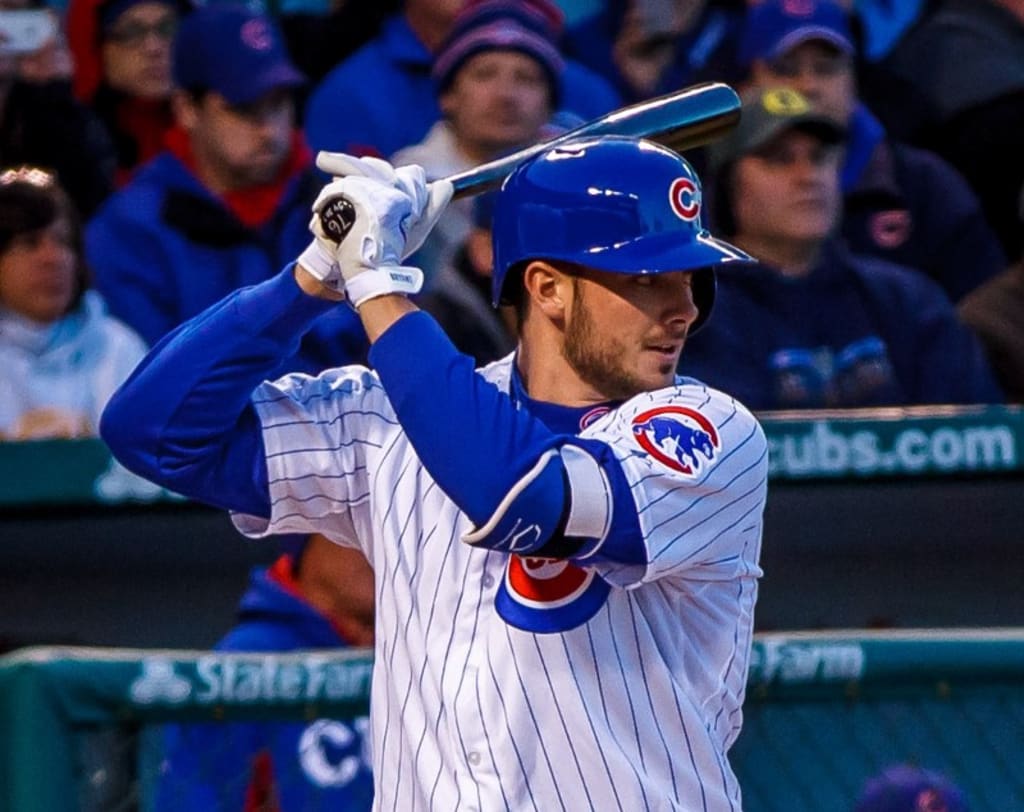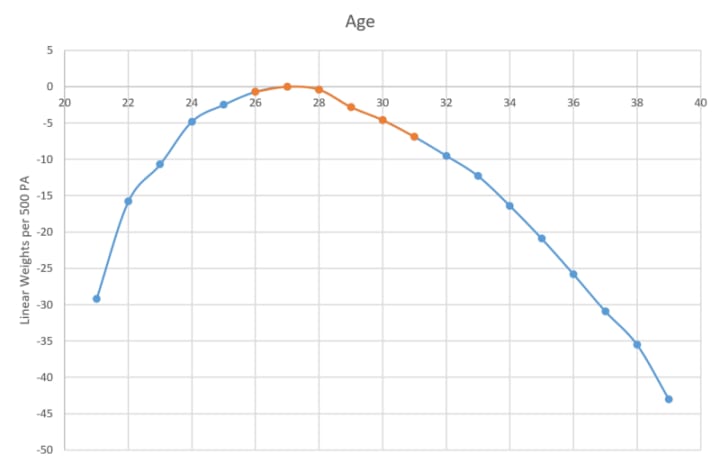Stop Drafting High Schoolers
It’s just a collectively terrible idea. High school players are worse than collegiate players in every way.

In the 2016 Major League Draft first round, out of 23 picks, 12 of them (more than HALF) came from high schools. The number one pick, OF Mickey Moniak, was drafted by the Phillies out of La Costa Canyon High School in San Diego.
BUT THAT WAS A HUGE MISTAKE.
Okay, fine: in particular, drafting Mickey Moniak probably won’t come back to bite the Phillies. He’s already shown he’s capable of playing pro-ball, he’s drawn comps to Jacoby Ellsbury, yada yada yada. But in general, drafting high schoolers is a terrible idea for MLB teams. Why?
1. You Miss Players’ Prime Years (and the discount on them)
The biggest advantage teams get by obtaining prime talents from the draft is the major discount that they receive on players. Thanks to salary arbitration, young players come dirt cheap in terms of $/WAR, even during their last season of arbitration.
For instance, David Price was worth 32.4 fWAR during his arbitration years, and was paid ~$53 million for those seasons. Given that when Price was drafted in 2007, the $/WAR rate was roughly $5.6 million, Price’s draft pick was a steal — he was paid less than $2 million per WAR (this isn’t wholly accurate because arbitration increases year by year, but on average, Price was a steal).
However, even if Price ages well, his current $187 million contract with the Red Sox will overpay him by tens of millions. It’s a system that works for players and teams. Players are underpaid for production during arbitration years, but overpaid during their free agency years. Teams, meanwhile, underpay their young stars, but overpay for free agents. It’s an understood agreement, essentially.
But teams could better optimize their dollars by drafting collegiate athletes instead of high-schoolers, because of the aging curve. This article from the Boston Globe does a good job explaining and describing the curve — players mature and develop, and peak in terms of production usually around the ages of 26–28, then decline with age. The below diagram has been borrowed from Mitchel Litman’s fantastic Hardball Times article on aging curves.

Michael Litman, Hardball Times
Let’s pretend that you’ve been drafted. It takes the average draft pick 4–6 years to reach the majors — if they make it at all. We’ll be generous and assume that we’re dealing with top tier talent who can make it up the ranks fairly quickly (I have a lot of faith in you, don’t let me down), and make it through the minors in 4 years.
If you’re drafted out of high school, you’re 18, and it’s expected that you’ll reach the majors around age 21 or 22. Then, you’ll play through your arbitration years, and hit free agency around ages 27 and 28. So, your arbitration years’ production looks like this:

Your production is just starting to plateau as you leave arbitration, but you’re primed to sign a big contract for the rest of your prime + a few years worth of decline.
But if you’re drafted out of college, your production during arbitration years looks like this instead:

As a player, this is bad — you’re making your debut around age 26, and for your best seasons, you’re not being paid as much as you should have. When you hit FA, there’s not as much of a reason to sign you to a big contract, because your best years will be behind you as you hit FA, and your career will be shorter.
But as a team, this is optimal. By drafting a player in college, teams get a discount on players’ prime. Who needs to sign a big contract for a free agent who will only be productive for half the contract, when you can draft a player and get their entire prime years at a discount?
Look at Byron Buxton, for instance. Buxton was drafted out of high school, and he’s entering his 3rd-odd season in the bigs. Buxton has a huge amount of potential — but by developing him in the big leagues, the Twins are arguably wasting their arbitration discount on years that he won’t really be good for them.
Compare him to Kris Bryant. Bryant entered the big leagues at a later age than Buxton, but he was definitely prepared, as his ROY and MVP awards show. The Cubs are taking full advantage of Bryant’s prime, and doing it on the cheap.
Sure, there are guys like Bryce Harper and Mike Trout who managed to be god-tier despite being 21 and 22. We can expect to see similar if not better production in the future from these superstars — so the upside, even when young, is too much to pass on. But guys like Harper and Trout are the exception, and not the rule.
2. Far Less Risk
Drafting is essentially a form of investment. A team invests time, money, and organizational space, and hopes for a return in the form of a great (or even decent) MLB quality player.
But the MLB dream isn’t for everyone. In the 2015 draft alone, 1,215 players were taken by MLB teams. Considering that there are only 750 total active roster slots for MLB teams, the odds of a given player reaching the majors is slim — even for first rounders, who have the best odds.
But teams can reduce their risk of a prospect becoming a bust significantly by drafting college players. Jim Sannes of numberFire found that of first round picks from 1980 to 2000, 75% of players drafted out of college made it to the majors, whereas only 58% of high schoolers reached the majors.

Jim Sannes, numberFire
One may expect the numbers to drop off significantly as we reach the later rounds, as the first round is usually where the best talent is drafted (ergo, it’s the most likely round for draftees to make the bigs), but the point still stands — college players present less risk.
3. College Players are Simply Better
Saying that the players are also better follows from point 2, in that players are more likely to reach the big leagues. If a player is better, they’re more likely to reach the big leagues — simple as that.
Bill James once said that “college players are a better investment than high school players by a huge, huge, laughably huge margin.” He’s very correct, not just in that college players are less likely to be busts, but also in that they’re better players than high schoolers.
The same study I referenced by Sannes also found that the average career WAR of high school draftees was nearly 1 WAR less than college players. Even though high school players on average should have longer careers because of their youth when they debut, they still end up producing less than college players.
Why is this? College is a far more competitive environment than high school. In college, weaknesses are exposed, there’s far less parity, and players are forced to improve to survive. It’s a tougher place than high school, but the players are better as a result.
Players can also get injuries “out of the way”. Nobody wants to undergo Tommy John surgery, but having it in college is far more preferable to having it interrupt your MLB career.
It’s clear, really — players should go to college if they want to succeed in the majors, and teams should draft out of college to get more bang for their buck. Sure, players might not get as big of a payday later down the line — but they have a much better chance of making an MLB roster in the first place.
About the Creator
John Edwards
Staff Writer for The Unbalanced, Contributor at Sporting News.






Comments
There are no comments for this story
Be the first to respond and start the conversation.